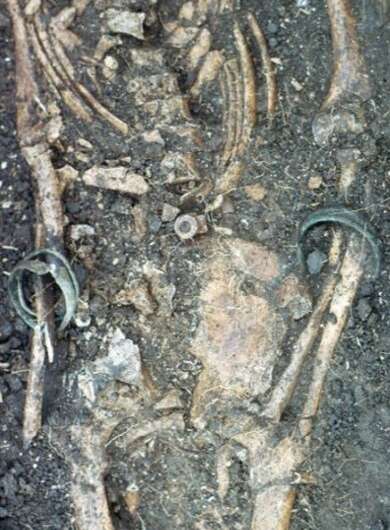Isotope analysis finds source lead poisoning among slaves on Barbados

The dental remains of 25 enslaved Africans from the site of Newton's Plantation, on Barbados, were subjected to isotope analysis. Previous research had pointed out that the locally born individuals were subjected to high concentrations of lead poisoning. A new study, done by Dr. Jason Laffoon among others and published in the American Journal of Physical Anthropology, employed isotope analysis to find the source of the poisoning.
The enslaved African population of Newton's Plantation
Previous osteological research identified the site's cemetery population as containing the skeletal remains of enslaved Africans that worked on the plantation from the 17th and 18th centuries AD. Previous isotopic analyses of carbon, nitrogen, oxygen, and strontium was able to identify which of these individuals were born in Africa (and forcibly migrated to the Caribbean) and which of them were born and raised on the island of Barbados. Subsequent analysis of Pb concentrations in their teeth and bones indicated that the locally born Barbadians were subjected to high levels of lead (Pb) poisoning throughout their lives beginning as early as infancy.
New analyses
The aims of this current study were to use lead (Pb) isotope analyses of teeth samples from the same individuals to try to determine the source of the lead poisoning, and to investigate if the Pb isotope ratios of the first generation African (forced) migrants could help to identify where in Arica they originated from.
Main findings
The Pb isotope ratios of all of the local Barbadian enslaved people are consistent with British lead sources. This suggests that the Newton population was subjected to lead poisoning primarily via exposure to British material culture. Although the exact mechanism of exposure is unknown, it is most likely related to the use of lead in pipes, pipe fittings, containers and other equipment used in the processing and production of rum.
Future research
The results of this study show great promise for determining the source of anthropogenic lead exposure amongst past populations. Unfortunately, the Pb isotope results did not shed new light on the specific areas of origin of the African-born individuals but future research combining new isotope analyses and aDNA analyses will attempt to address this question.
More information: Jason E. Laffoon et al. Isotopic evidence for anthropogenic lead exposure on a 17th/18th century Barbadian plantation, American Journal of Physical Anthropology (2019). DOI: 10.1002/ajpa.23938
Journal information: American Journal of Physical Anthropology
Provided by Leiden University





















